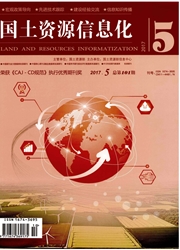

 中文摘要:
中文摘要:
开放式地理信息系统(Open GIS)互操作规范指在国家和世界范围内的分布式环境下实现地理空间数据和地理信息处理资源的共享。它允许用户通过网络实时获取不同系统中的地理信息,避免了冗余数据存储,是实现地理空间数据共享的一次深刻的技术革命。1999年OGC推出了第一版本GML规范开始就有大批的学者投入到对其的研究中来,对规范的详细研究是展开其他研究的基础。本文就GML标记语言规范本身进行了研究,比较了三个不同版本的特点、分析了它的数据模型、研究了其建模规则、对其不足之处进行了总结,对GML的发展前景进行了展望并就以后版本的GML规范提出了一些作者自己意见和希望。
 英文摘要:
英文摘要:
The specification for the Open-GIS interoperation aims at realizing the nation-wide and world-wide data sharing of the geographic spatial information and the processing resources of the geographic information. By the help of it, the user can obtain the geographic information timely from different systems and save more space for other data. So it is a significant technical revolution in the field of geographic spatial information sharing. Since the publication of the first edition of GML specification by OGC in 1999, many people have carried out researches on this subject, and the detailed study of the specification is the basis of other studies. This paper studies the GML specification, compares three different editions, analyses its data model and the modeling rules, and summarizes its shortcomings. The authors propose their opinions on GML specification and their hopes to the prospects of GML development.
 同期刊论文项目
同期刊论文项目
 同项目期刊论文
同项目期刊论文
 期刊信息
期刊信息
